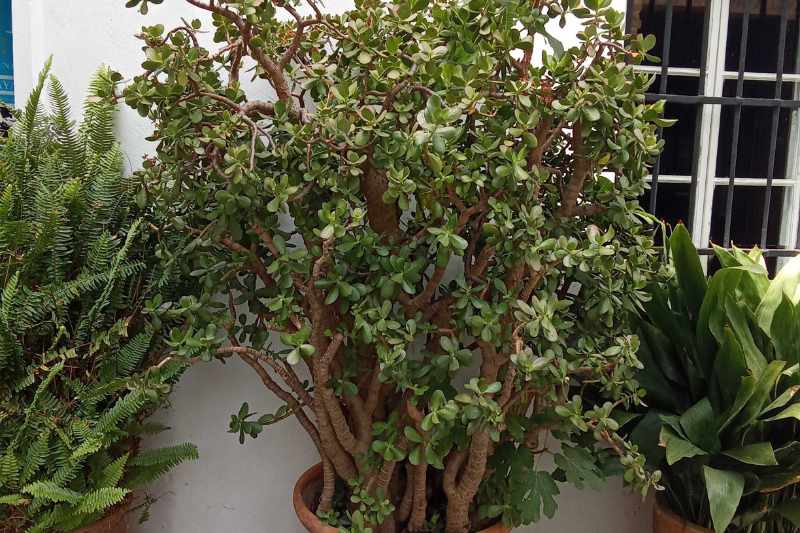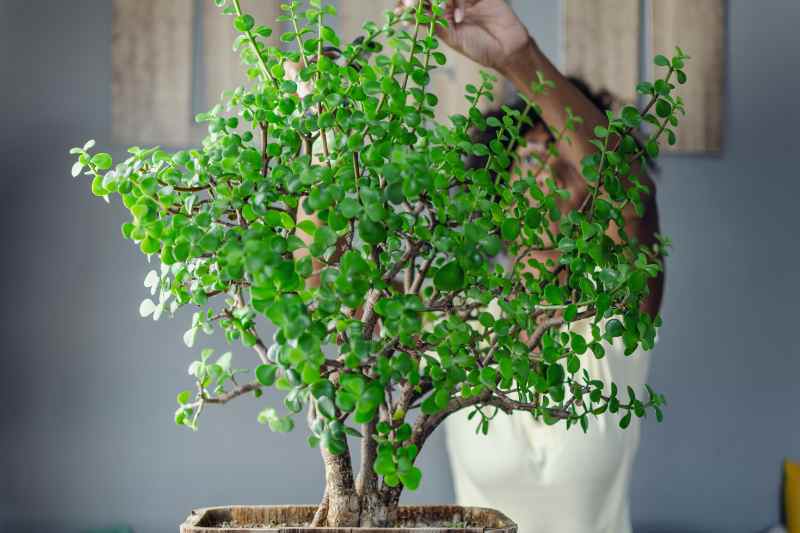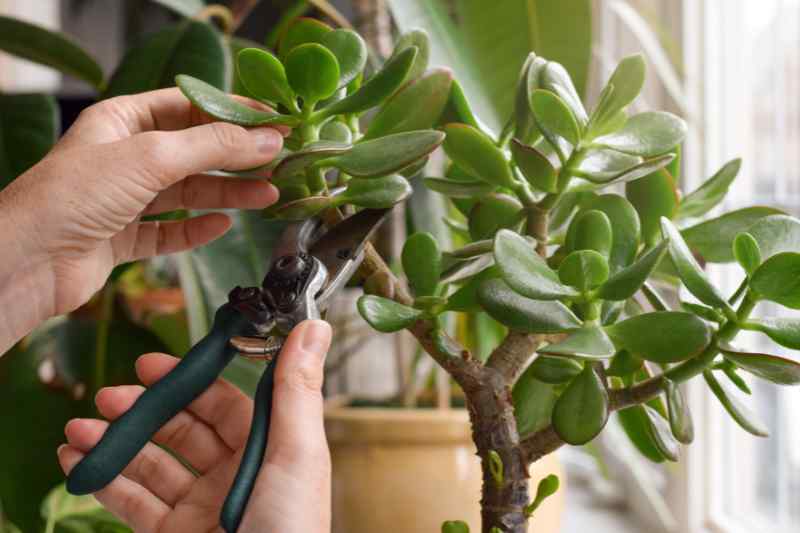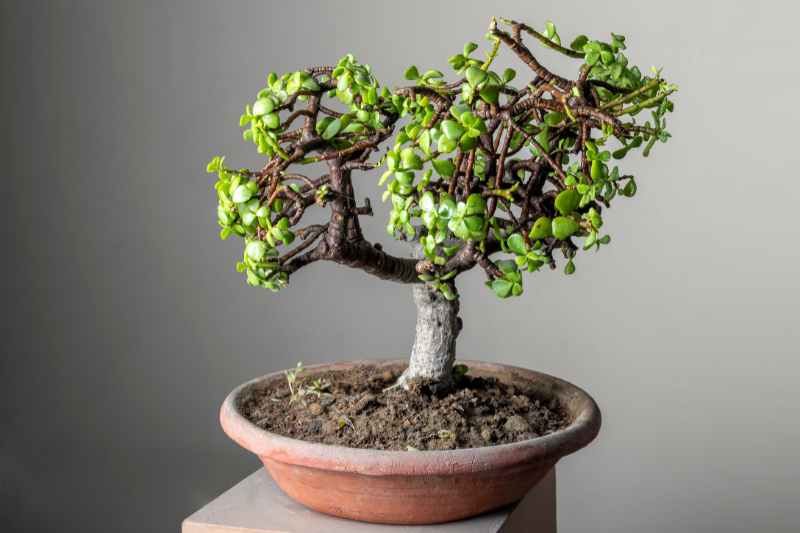The Jade plant, or Crassula for those in the know, is a wonderful succulent plant that develops fleshy stems resembling small trunks over the years. Once the branching becomes dense, you might want to contain this beautiful South African plant a bit, either because space is limited indoors or outdoors, or because you prefer to see it grow like a bonsai indoors.
Here’s everything you need to know about pruning your Jade plant according to your goal.

Why pruning a Crassula?
This ornamental plant can live for over 100 years! It can sometimes become cumbersome or truly imposing over time, or even unbalanced in its silhouette. Pruning helps control its spread and gives it a harmonious shape.
Whether you have a Crassula ovata or a Crassula arborescens, the most commonly cultivated varieties, remember that this succulent plant with fleshy leaves and trunk tolerates pruning very well. The reason is simple: the water stored in their tissues allows them to survive and recover well after pruning, even significant pruning.
Pruning is only done on Jade plants that are several years old and well-developed, or when they are young if you want to train them as bonsai.
N.B.: You can also pinch the Jade plant, meaning you cut certain branches above a pair of leaves, to densify it by encouraging branching, which is done when the plant is still young and needs to fill out (like formative pruning).

Pruning a Jade plant in a pot or outdoors
The golden rule for pruning a Crassula is to never prune more than 20 to 30% of the plant at once. The best time to prune is early spring, just before the active growth period, and after flowering if it occurred in winter. This allows the Crassula to recover more quickly and produce vigorous new shoots.
Maintenance pruning is done to keep the plant healthy, while reduction pruning is done to control its size.
- In both cases, identify dead, diseased, or overly long branches that disrupt the plant’s shape.
- Prune evenly around the plant, turning it and observing it from all angles to maintain a balanced shape. Use gardening scissors or fine pruning shears, sharp and disinfected, to avoid spreading diseases.
- Cut just above a leaf node or a pair of leaves. This will encourage the plant to produce new shoots at that spot.
N.B.: These prunings are ideal for propagating the Jade plant after letting them dry for 2-3 days. See our topic: How to Propagate Crassulas Easily?

Pruning a Jade plant as a bonsai
Bonsai pruning is a bit more complex and aims to create a miniature version of the Crassula. The Jade plant is traditionally planted in a bonsai pot, low and wide, made of terracotta or ceramic.
- Work on a young Crassula, 3 to 5 months old.
- Identify the main branch that will form the trunk of your bonsai. Choose a healthy branch to create the bonsai’s framework.
- To guide the plant’s growth in a specific direction and create a particular shape, use copper wire as a ligature. Gently wrap the wire along the main stem. Be careful not to tighten it too much to avoid damaging the soft bark of the Jade plant. This step is called wiring.
- Orient the stem upward with the help of the copper wire, then gently twist it to achieve the desired sinuous shape.
- Using a pair of fine, disinfected scissors, remove any excess shoots to aerate the plant and clearly define the sinuous shape given to the future trunk. This is the crucial step that will determine the aesthetics of your Crassula bonsai (keep no more than 6 to 7 shoots).
- Repot your baby bonsai by carefully removing the substrate and placing it in its ceramic pot, which should have drainage holes and be filled with a lightweight mix of sand and coconut fibre. A stone placed in the pot will help position and stabilise the young plant.
- Remove the wires after a few months to prevent them from marking the bark.
- Just like with a classically potted Crassula, you’ll also need to perform maintenance pruning to encourage new branches. Regularly observe your Jade plant and adjust the pruning and shaping over time to achieve the desired result.
Important: Even on a young plant, the branches and leaves remain brittle. Work very carefully to avoid breaking the stems!

Learn more in our articles How to form a bonsai step by step and How to care for a bonsai?.
































Comments